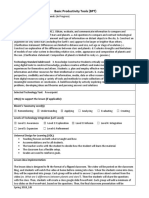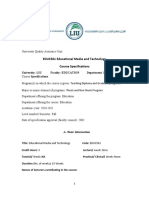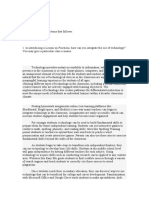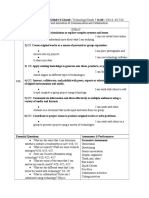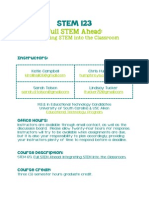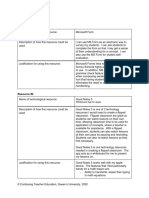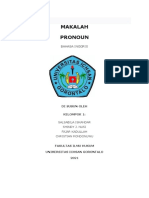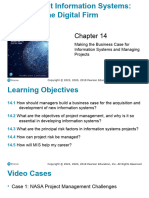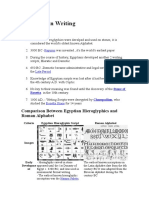0% found this document useful (0 votes)
44 views12 pagesCourse Syllabus MAGS005 Technology Integration in Science
The course syllabus for 'Technology Integration in Science' at Bataan Peninsula State University focuses on enhancing science teachers' pedagogical skills through the integration of educational technologies. It outlines various teaching methods, including Learning Management Systems, Flipped Classroom, and simulations, while emphasizing the importance of digital age learning experiences. The course aims to equip students with the knowledge to design effective learning plans and utilize technology in science instruction.
Uploaded by
Glenda AbadCopyright
© © All Rights Reserved
We take content rights seriously. If you suspect this is your content, claim it here.
Available Formats
Download as DOCX, PDF, TXT or read online on Scribd
0% found this document useful (0 votes)
44 views12 pagesCourse Syllabus MAGS005 Technology Integration in Science
The course syllabus for 'Technology Integration in Science' at Bataan Peninsula State University focuses on enhancing science teachers' pedagogical skills through the integration of educational technologies. It outlines various teaching methods, including Learning Management Systems, Flipped Classroom, and simulations, while emphasizing the importance of digital age learning experiences. The course aims to equip students with the knowledge to design effective learning plans and utilize technology in science instruction.
Uploaded by
Glenda AbadCopyright
© © All Rights Reserved
We take content rights seriously. If you suspect this is your content, claim it here.
Available Formats
Download as DOCX, PDF, TXT or read online on Scribd
/ 12














